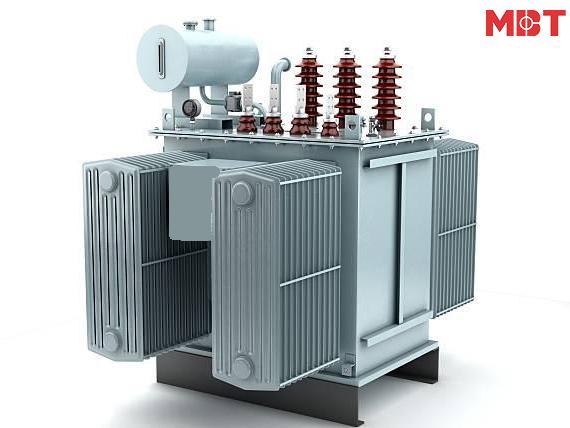METHODS OF TRANSFORMER COOLING
The cooling system plays an important role in handling destroyers of transformers caused by heat. The generation of heat in the transformer is caused by internal losses like hysteresis, eddy current, iron, and copper loss, or loading, high ambient temperature, and solar radiation. If the temperature continues to climb rapidly, it will damage the various parts and failures of the transformer.
Removing and decreasing the heat of the transformer is useful for the efficient working, longer life, and higher efficiency of the transformer. The cooling system is equipped with various coolants as air, synthetic oils, mineral oils, gas, water.
The transformer is divided into two types: dry and oil transformer. There are the cooling methods as follows:
1. Air Natural
2. Air Blast or forced
3. Oil Natural Air Natural
4. Oil Natural Air Forced
5. Oil Forced Air Forced
6. Oil Natural Water Forced
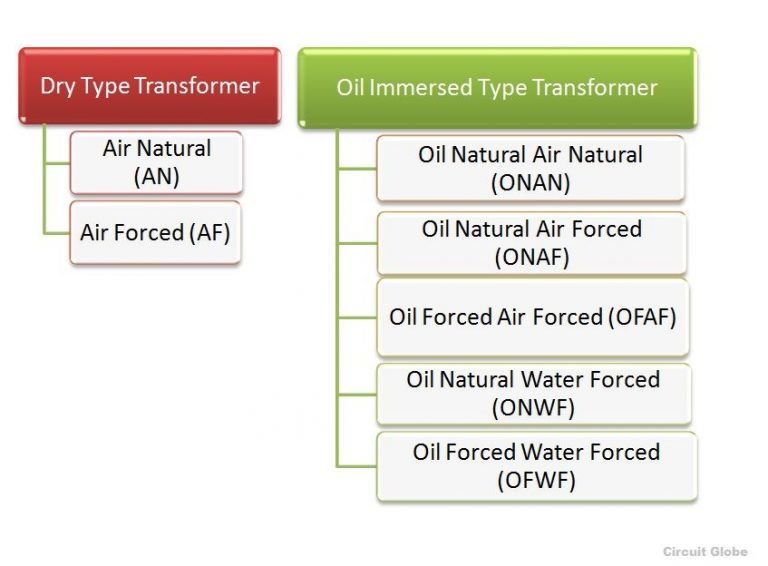
Dry Type Transformer
Air Natural (AN)
Basically, due to Air Natural Method When the temperature of the transformer rises higher comparing to the temperature of the surrounding air, the heated air is cooled by the circulation of natural air. This method, called a self-cooled method, is used for cooling the smaller output transformer rating (up to 1.5 MVA).
Air Forced (AF) or Air Blast
Regarding this method, the temperature of the transformer decreased by the forced air circulation method. The high velocity of air is forced on the core and the windings of the transformer by fans and blowers.
the fans and blowers are switched ON automatically if the alarm of the standard safe level of the transformer is activated. This solution is used for transformers rating up to 15MVA.
Oil-Immersed Type Transformer
Oil Natural Air Natural (ONAN)
The temperature of the transformer is cooled by the Natural convection process. The core and windings are designed in the oil-immersed tank. Due to the heat of the core and the windings, the temperature of the oil in the transformer rises. Then, the oil moves upward and flows from the upper portion of the transformer tank. This hot oil dissipates heat in the air by conduction process and natural convection, the oil is cooled by the circulation of natural air and passes through the radiator again for the use of the transformer. This method is used for the transformer rating up to 30 MVA.
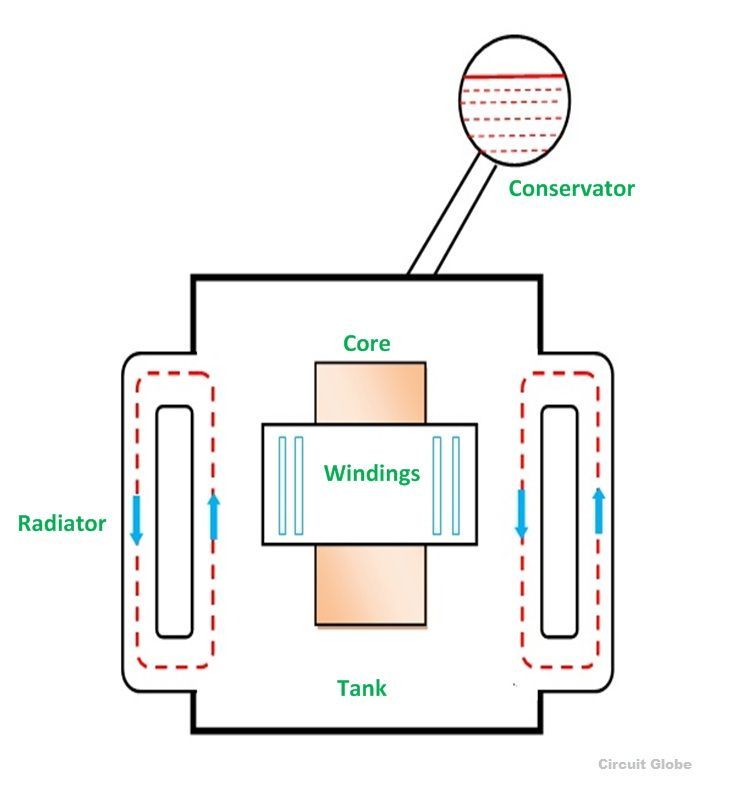
Oil Natural Air Natural Cooling of Transformer
Oil Natural Air Forced (ONAF)
With this method, the forced air is used for the purpose of cooling the transformer. The oil cooling will be faster if the tank area of the transformer is increased, resulting in an increase in the degree of heat dissipation. When fans and blowers are installed, a high velocity of air is forcefully applied to the radiator and cooling tower, which will help cool the oil more quickly and efficiently.
Its cost is higher than another process in which the circulation of oil and air is done spontaneously because a fan and blower are attached as an additional cooling device. ONAF method is used for the transformer rating up to 60 Mega volts’ ampere.
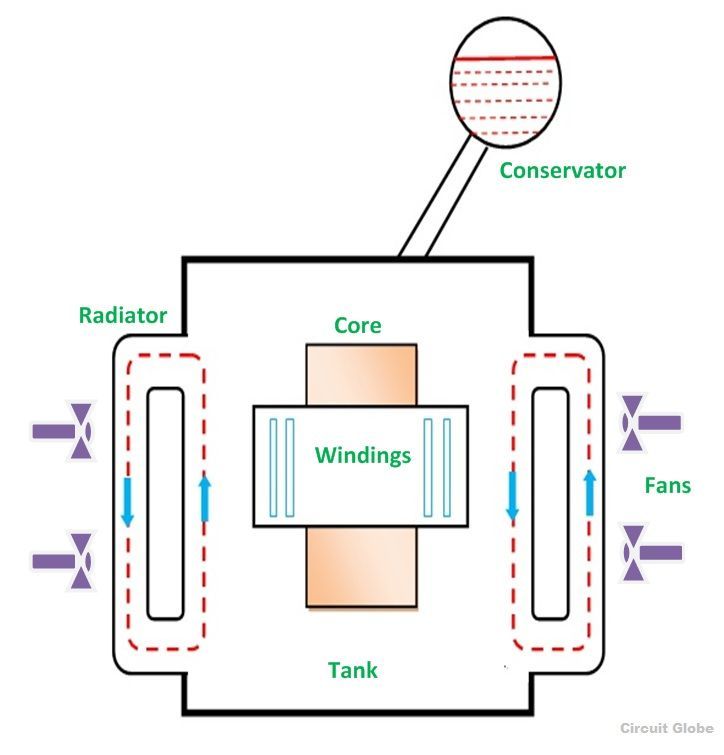
Oil Natural Air Forced Cooling of Transformer
Oil Forced Air Forced (OFAF)
With this method, both oil and air are forced to cool the transformer. with the help of a pump, Heat exchangers are installed through which hot oil is circulated. Air is forced to pass through the heat exchanger with the help of a high-speed fan.
Like ONAN method, because of a low load on the transformer, cooling is done using the simple ONAN method. However, as soon as the load is increased, more heat will be generated and therefore the sensor will give a warning that the heat dissipation has exceeded a safe value and the fan and pump are turned on automatically as a result. Therefore, the cooling takes place by the OFAF method.
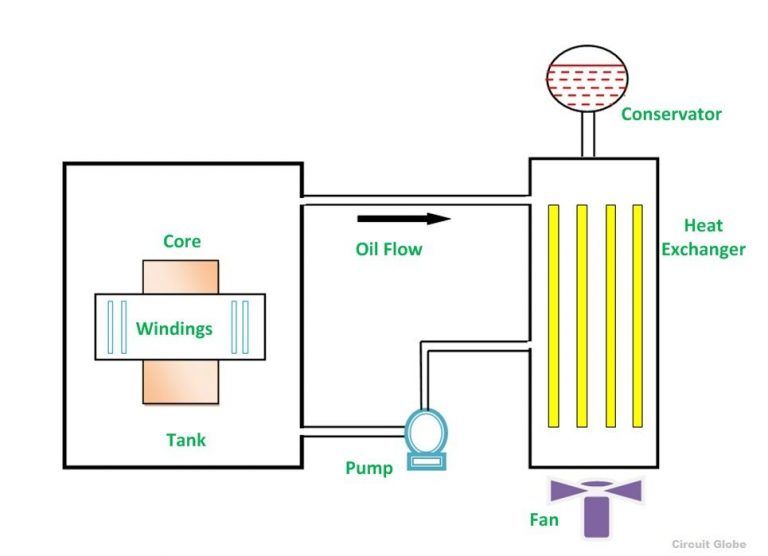
Oil Forced Air Forced Cooling of Transformer
Oil Natural Water Forced (ONWF)
In the Oil Natural Water Force cooling method, the transformer core and the windings are placed in the oil tank. A radiator is installed outside the tank, as the temperature goes up and the oil heats up and moves upward, the heat is dissipated by the natural process of convection, and oil is passed through the radiator, but the water is pumped and passed through the heat exchanger for cooling of the oil.
Oil Forced Water Forced (OFWF)
A heat exchanger is installed through which both water and oil are passed with the help of a pump. The pressure and level of the oil are always kept higher than that of water so that if any leakage occurs in the system the oil mixes with the water, but water is not mixed up with the oil.
This type of method suits for large capacity of the transformer having a rating of several hundred MVA or where banks of transformers are installed. Importantly, this type of cooling is done for the transformer installed at the hydropower plant.
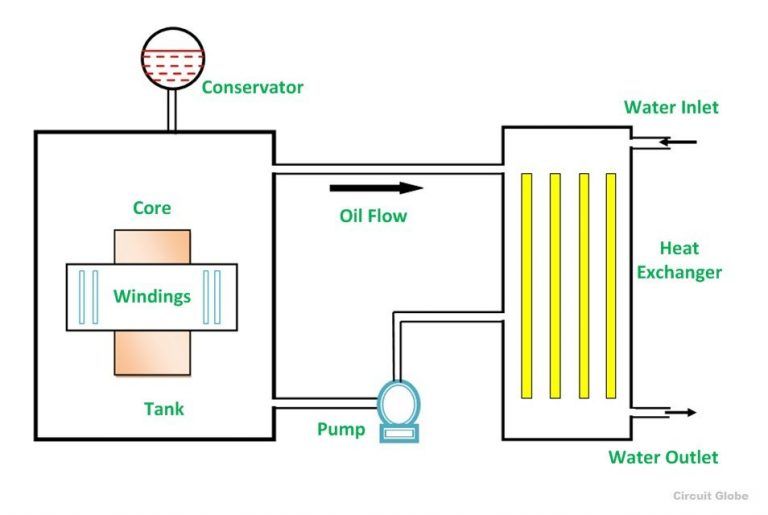
Oil Forced Water Forced Cooling of Transformer
